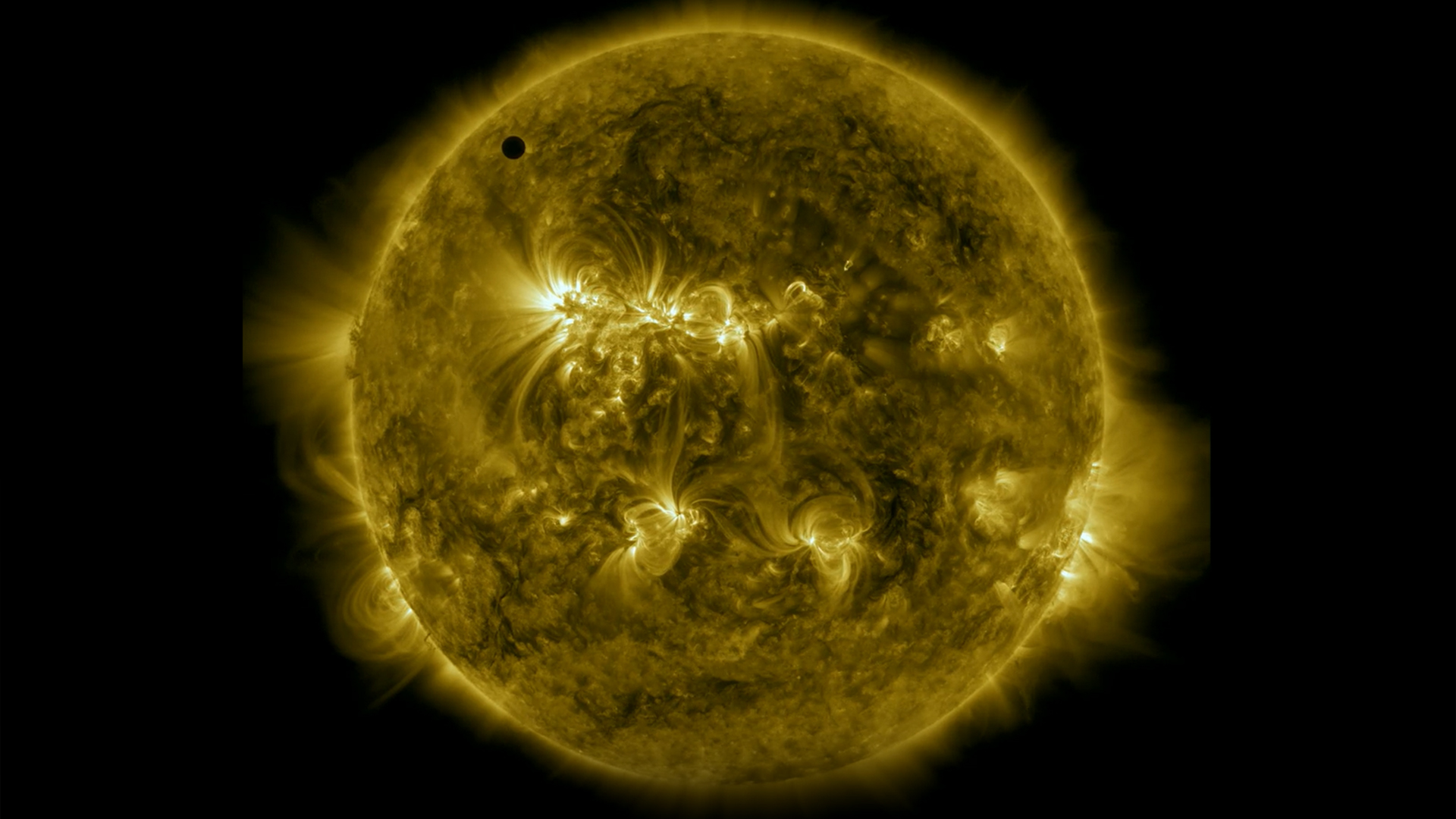
The sun's intense brightness makes it unsafe for us to get a detailed view of it by traditional means. So, for over 200 years, humans have relied on different modes of photography to safely glimpse the nuances of our star. Now, a range of telescopes and imagers capture the details, the violence and the beauty of the solar system's heart. Here are 15 of the most dazzling examples.
1. The sun's many colors

This iridescent orb is an ultraviolet image of the sun taken by the European Space Agency's (ESA) Solar and Heliospheric Observatory's extreme ultraviolet telescope. The blue represents temperatures more than 1.8 million degrees Fahrenheit (1 million degrees Celsius), yellow is 2.7 million F (1.5 million C) and red is 3.6 million F (2 million C).
2. A violent ejection

This extreme ultraviolet image captures a coronal mass ejection (CME), which occurs when a cloud of highly magnetized plasma erupts from the sun, expelling the plasma and magnetic field into space. In this image, some of the solar filament falls back to the sun while much of it escapes into space.
3. Burning rain

When million-degree plasma in the sun's atmosphere cools, it begins to fall. The stunning stream of plasma raining down to the surface — captured here by NASA's Solar Dynamics Observatory (SDO) — is called coronal rain.
Related: Solar maximum could hit us harder and sooner than we thought. How dangerous will the sun's chaotic peak be?
4. Star loops

This image from Nov. 29, 2020, taken by NASA's SDO, displays with stunning clarity an arcade of coronal loops. Coronal loops are "ropey curving strands of plasma that appear as arcs above the sun's surface," according to the University Corporation for Atmospheric Research.
5. The quiet sun
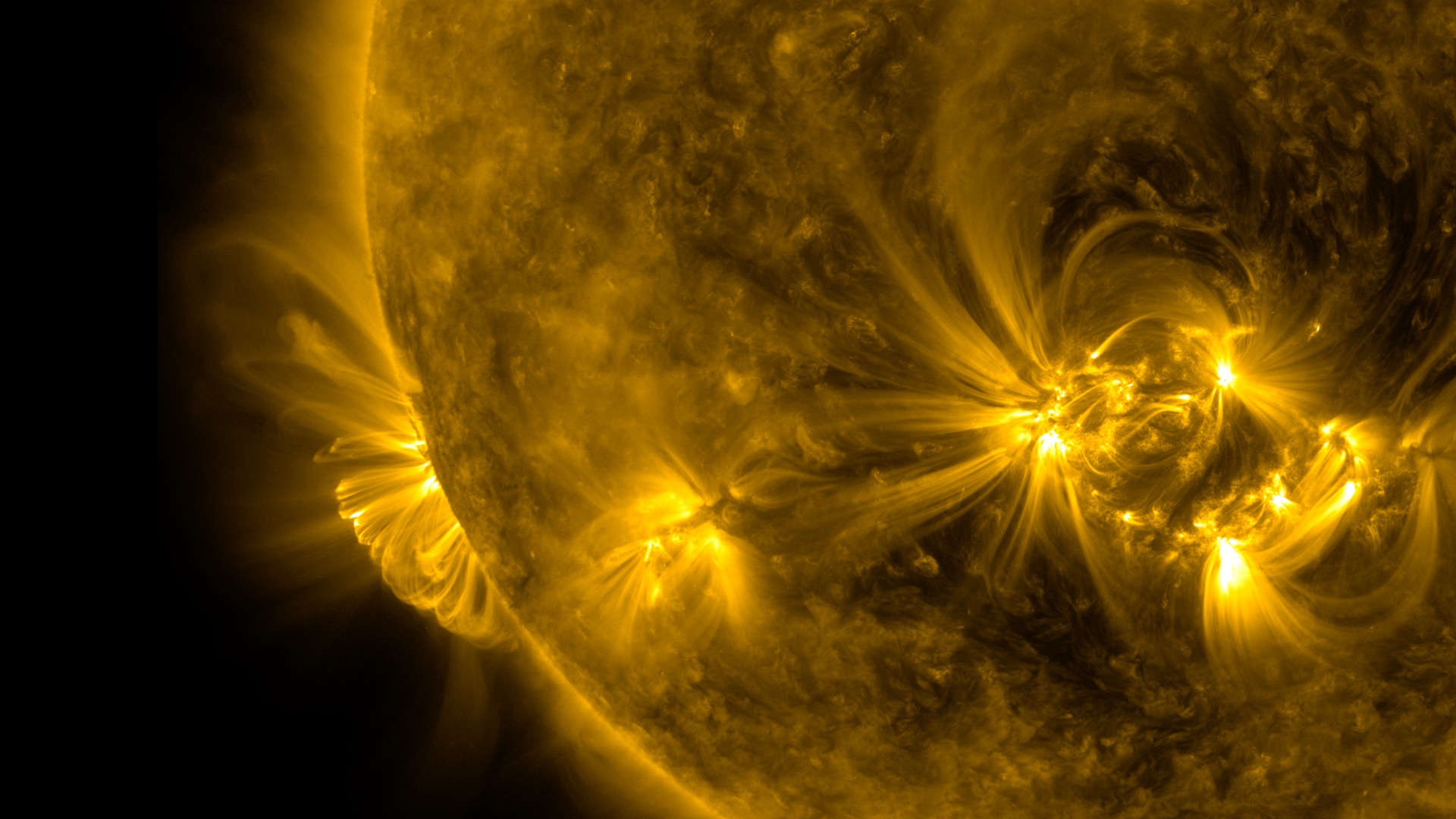
The SDO observes the sun with a variety of instruments and in many different wavelengths. This image shows light at 171 angstroms, a wavelength often used to view the sun's atmosphere when it's quiet, when no solar flares or CMEs are happening.
6. The largest prominence
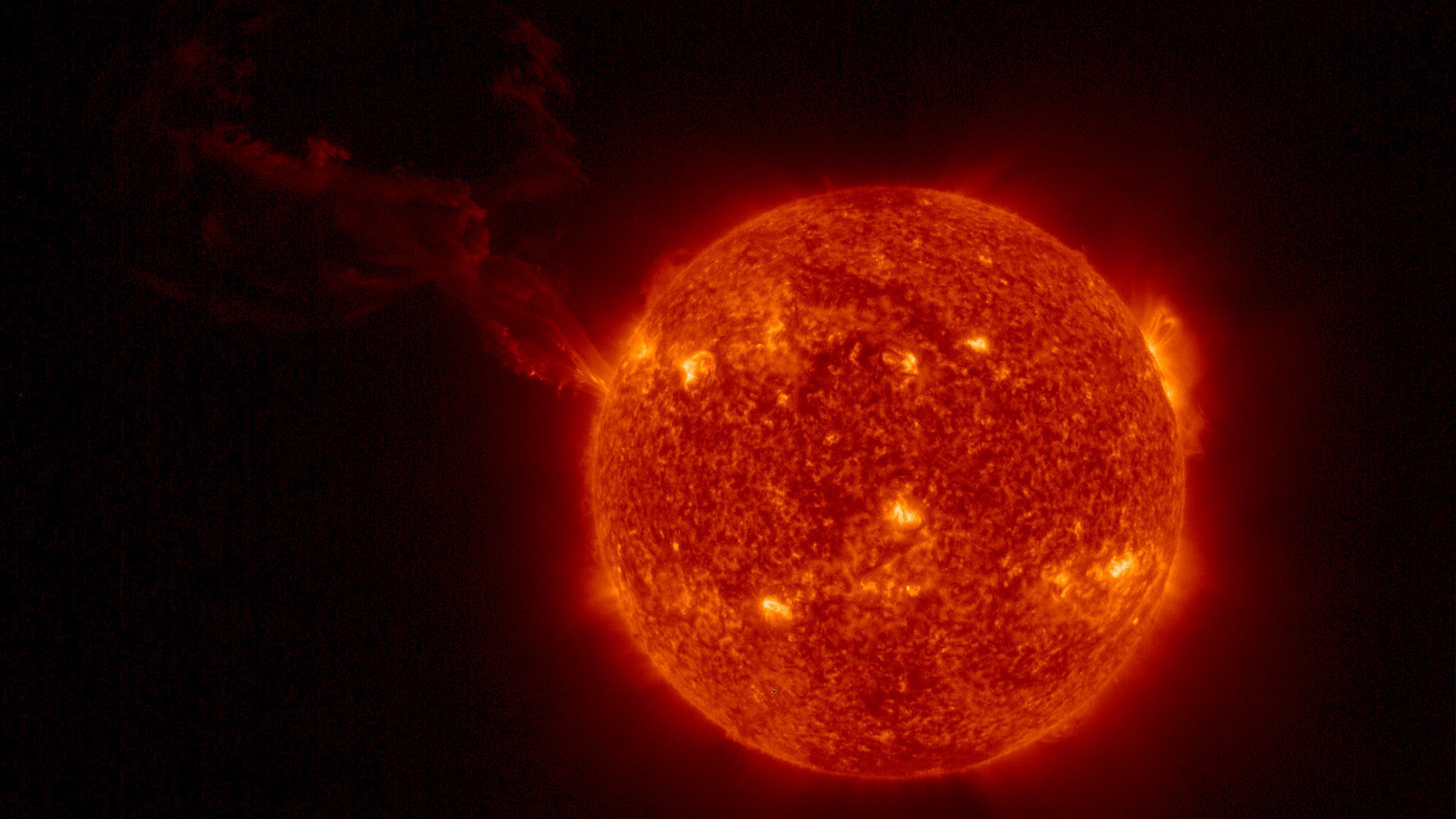
According to ESA, this solar prominence— a structure of tangled magnetic-field lines that keep dense concentrations of solar plasma suspended above the sun's surface — is the largest ever solar prominence captured in a single image of the entire solar disk.
7. A flurry of flares
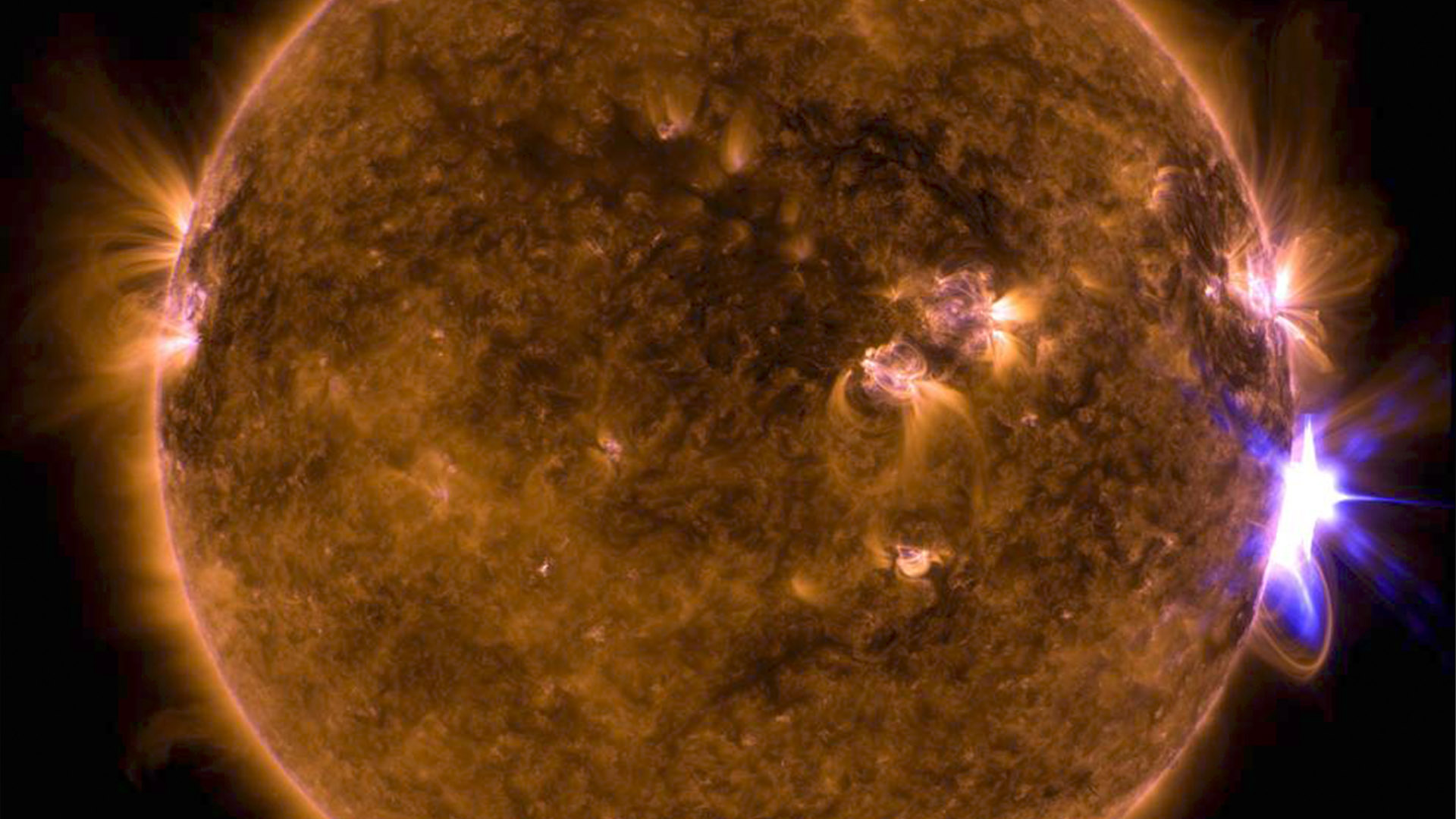
This image is from a massive solar eruption in 2017 that included a medium solar flare, an intense CME and a flurry of solar energetic particles. These energetic particles can interact with Earth's magnetosphere and interfere with radio transmissions. The explosions created a solar storm that interrupted radio transmissions at high latitudes for three days.
8. Sun-o'-lantern
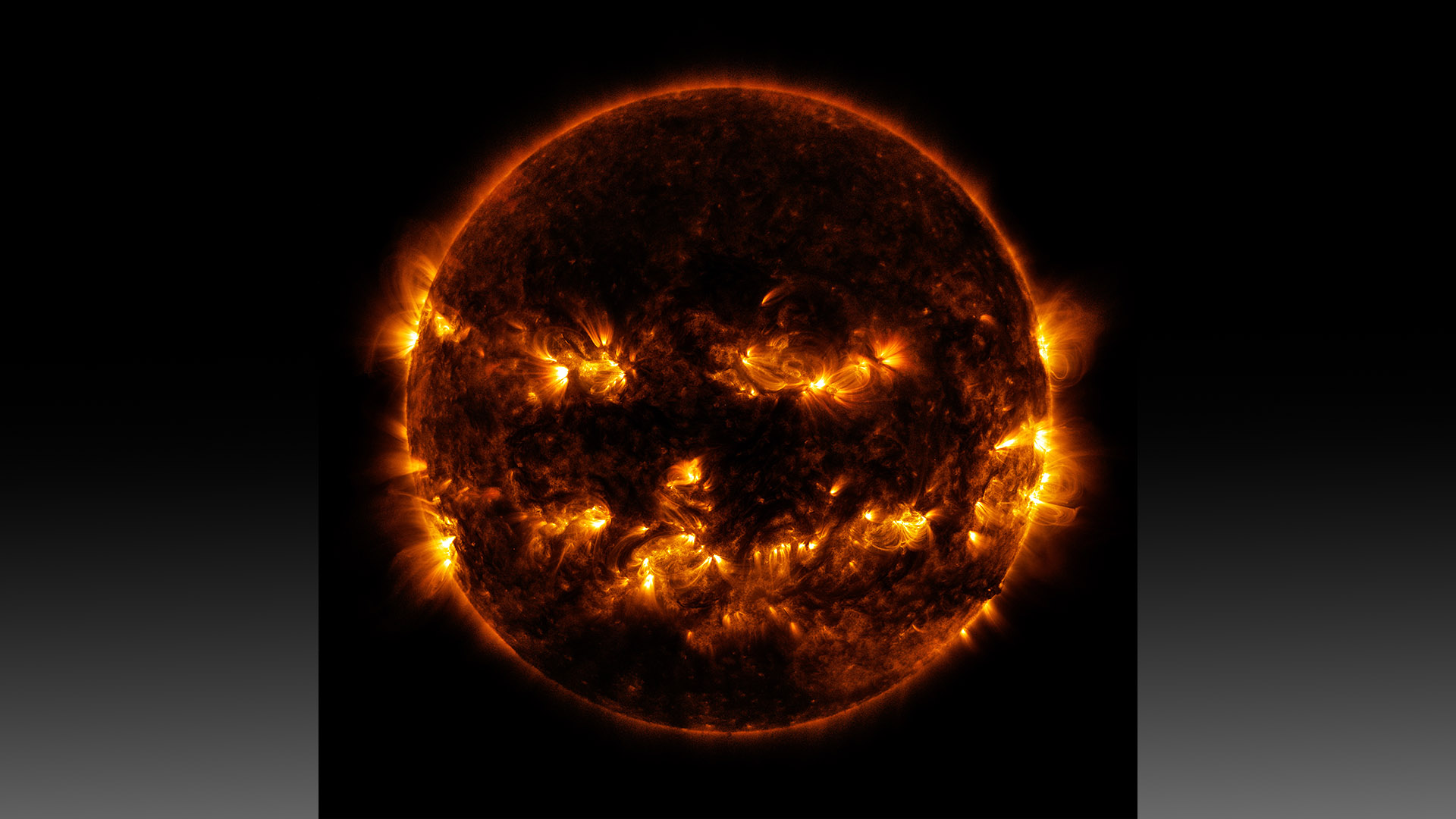
In October 2014, the active regions of the sun created the seasonally appropriate appearance of a jack-o'-lantern. The image combines wavelengths of 171 and 193 angstroms, which appear as gold and yellow, to create an especially Halloween-y look.
9. Windy chasms

From this golden image, we get a peek at two coronal holes. These are the areas that appear dark in extreme ultraviolet images, because they are cooler, less-dense regions than the surrounding plasma, and magnetically open. It's from these regions that solar winds cascade into the solar system.
10. An ethereal opening
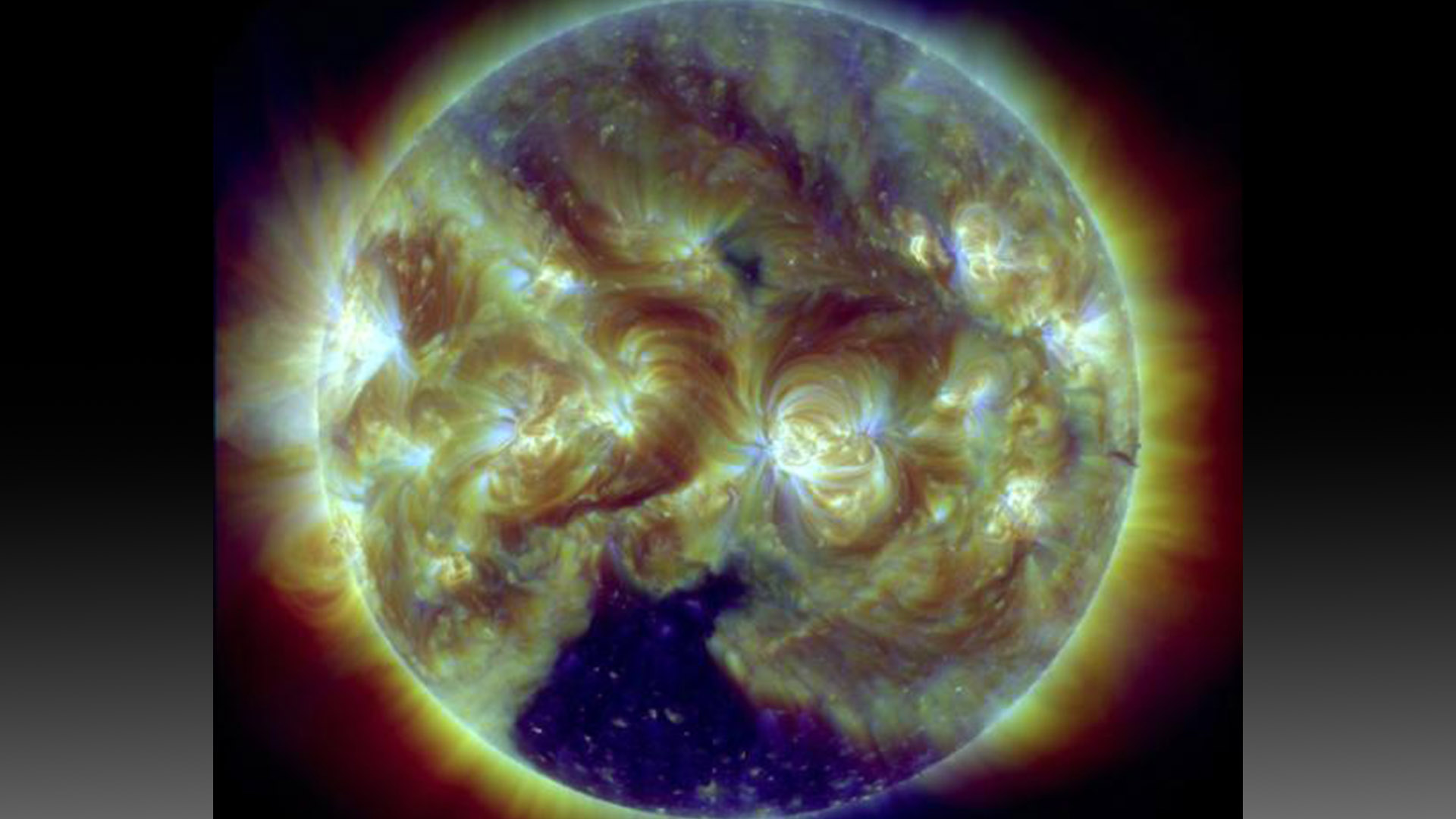
This ethereal image captures another coronal hole that grew to a massive size in 2015. The open magnetic area went halfway across the sun, meaning it was about 50 times the size of Earth.
11. The mystery heats up
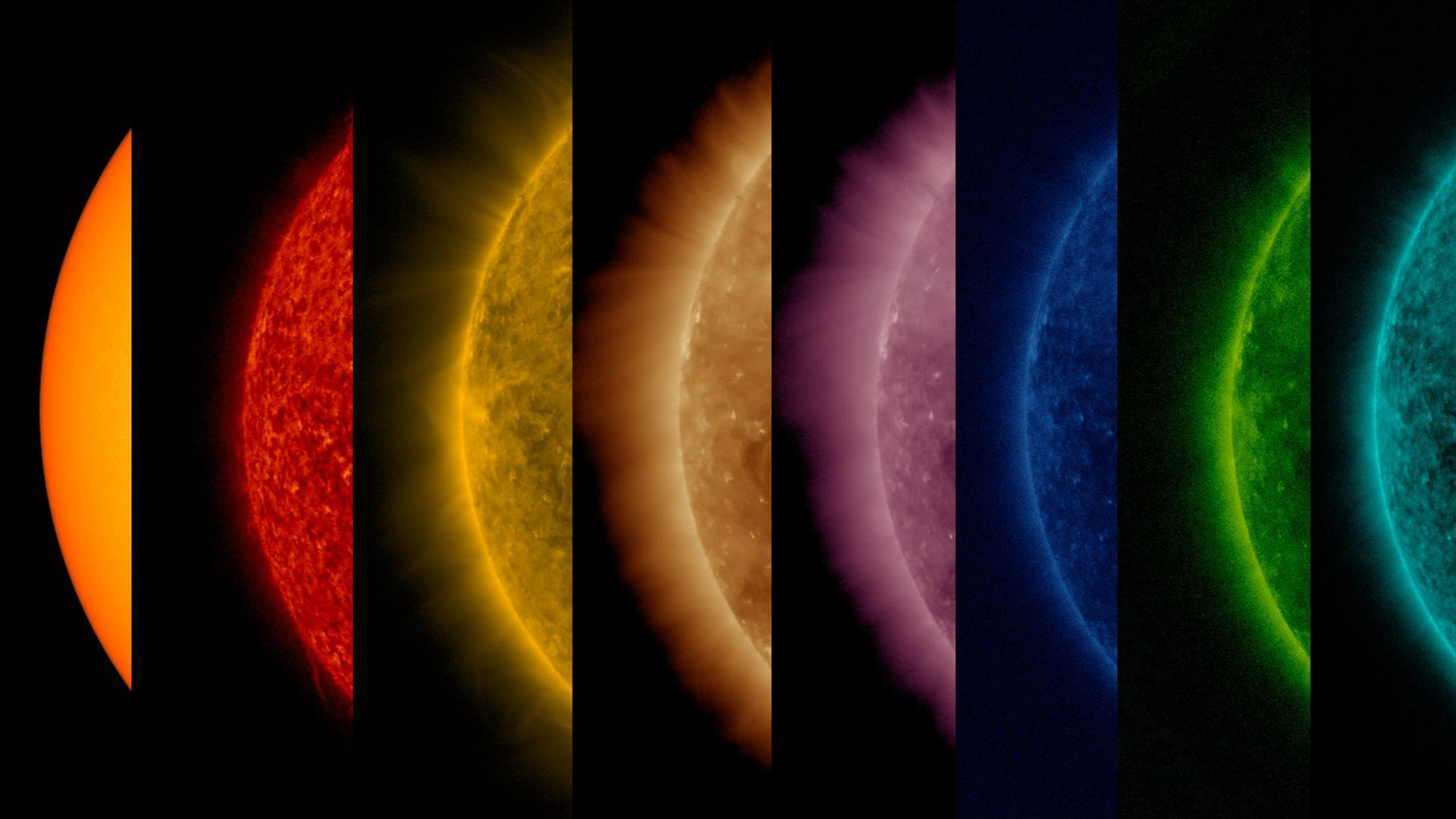
These images show the sun in a variety of wavelengths. They are arranged by temperature, from the 10,800 F (6,000 C) surface of the sun to the 50 million F (10 million C) outer atmosphere. Scientists are still trying to understand why the sun's outer atmosphere is so much hotter than the surface.
12. A solar mosaic
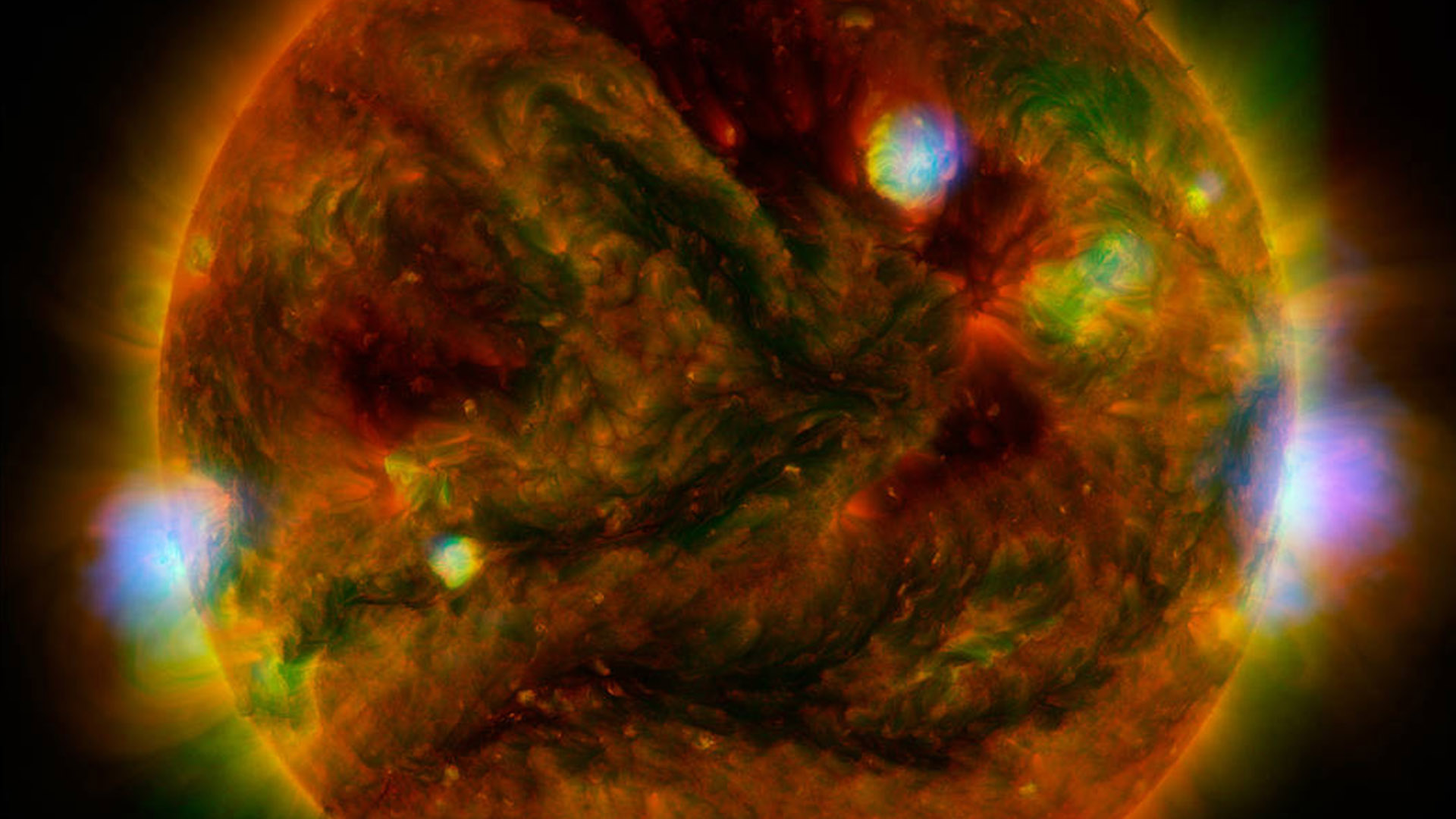
This stunning view of our star is a mosaic made of smaller images from NuSTAR, a telescope that usually stares deep into space in search of X-rays from black holes and supernovas. But it can capture small pieces of the sun, too. The blue-white regions mark the most energetic areas. The image also captures microflares, which heat and feed the larger flares.
13. Hello, Venus

This simple image of Venus' passage in front of the sun, called a Venus transit, is made all the more beautiful because it's so rare. Because of Earth's tilted orbit, Venus' journey won't be visible like this again until 2117.
14. An intimate explosion
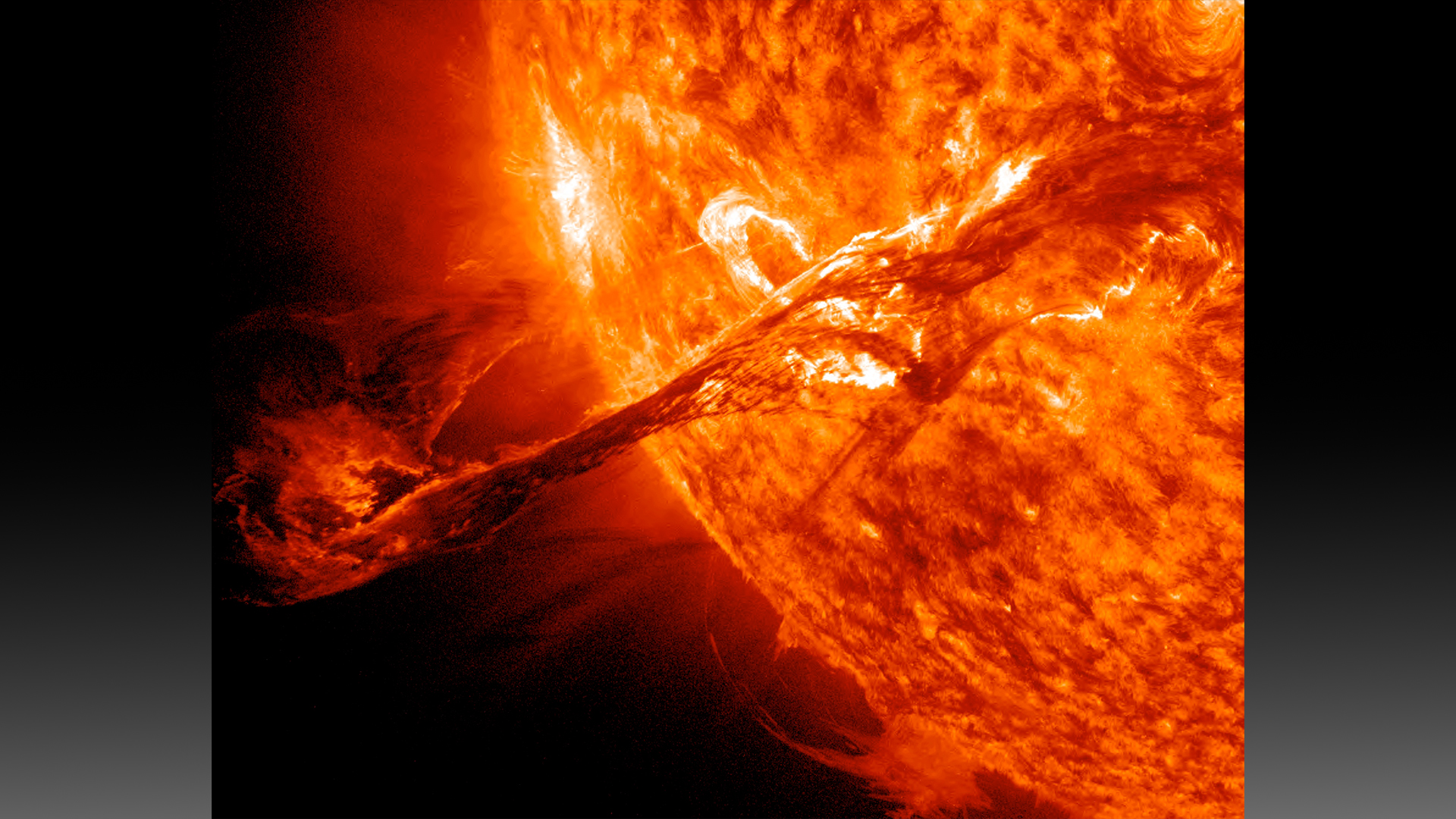
This stunning close-up captures a violent eruption in 2012. A long solar filament that had been suspended in the sun's atmosphere exploded into space. The CME hurled into space at 900 miles per second (1,450 kilometers per second).
15. The sun in full glory
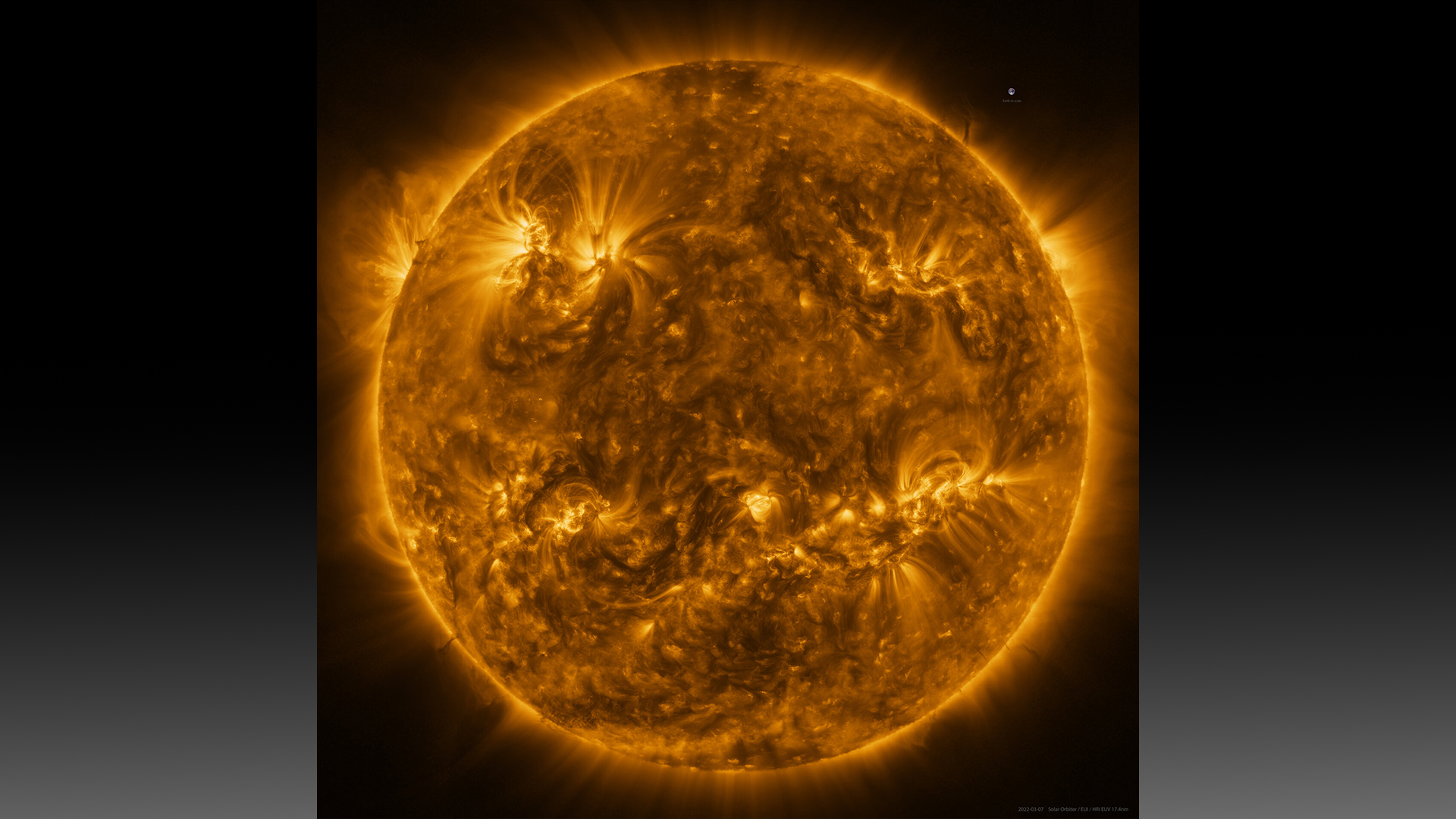
This ESA image from 2022 is a mosaic of 25 images. It's one of the most detailed and comprehensive looks we've ever had of the star next door.
Related: Sun's fiery surface revealed in amazing composite of 90,000 images







